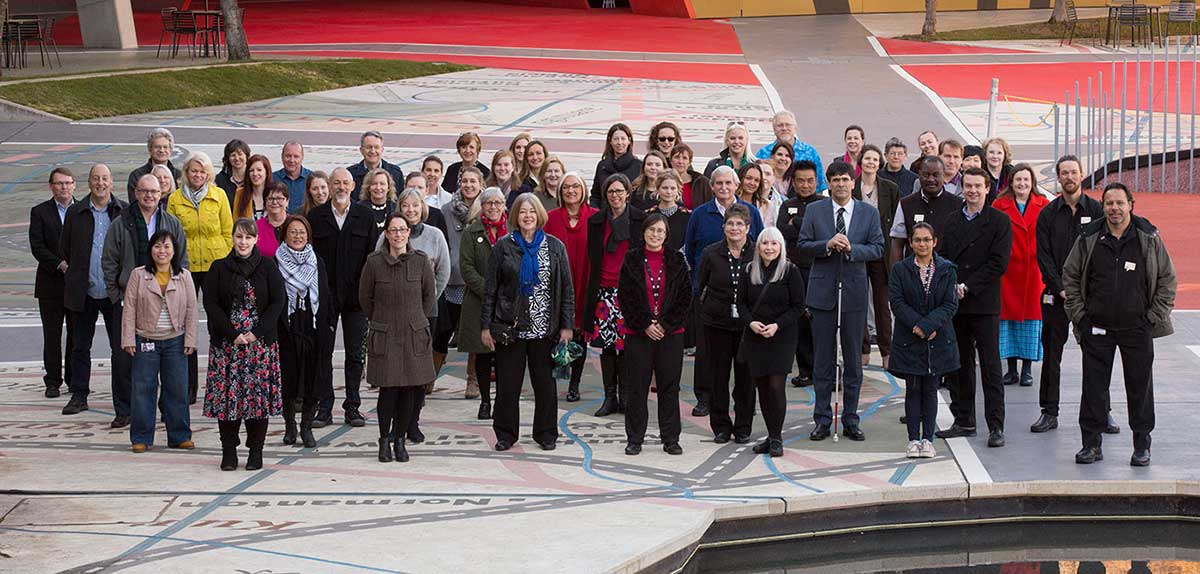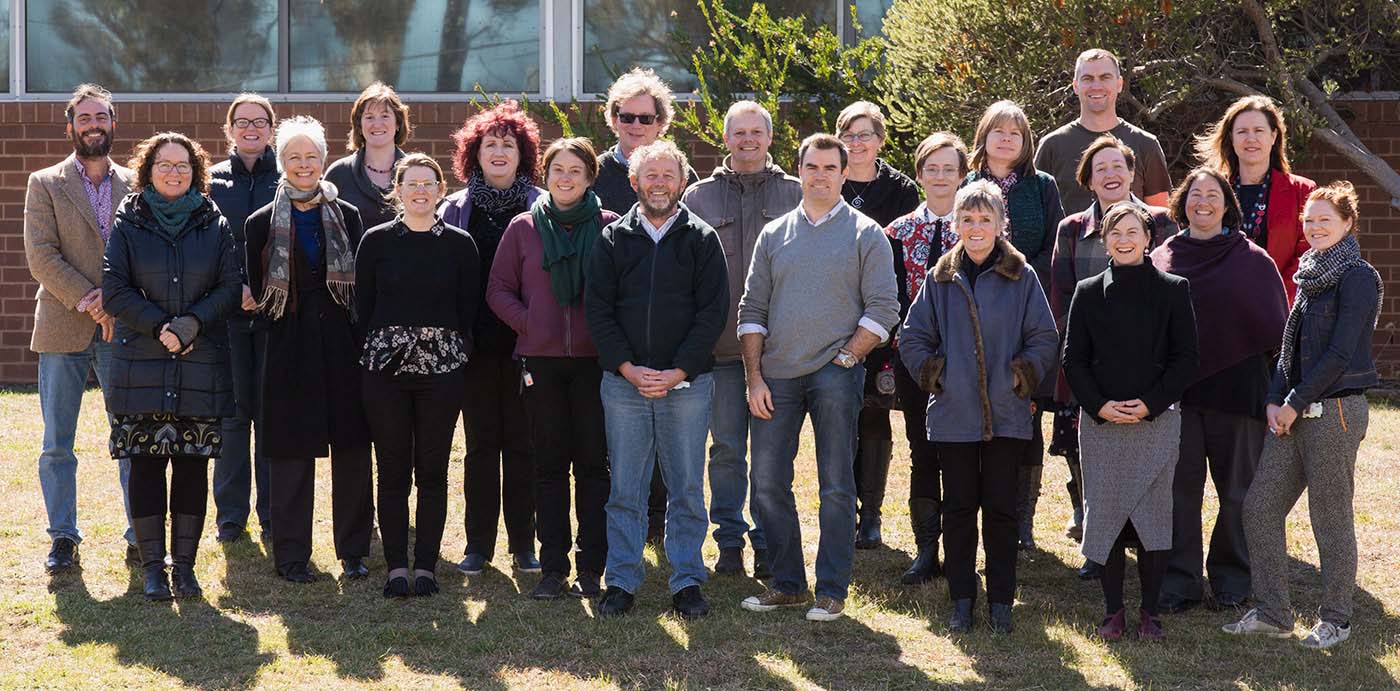Streamline business processes and systems to achieve organisational efficiency
OUR TARGET
- Number of items conserved greater than 0.20 per cent of total collection count through the development and implementation of conservation/preservation activities.
WHAT WE ACHIEVED
- The Museum achieved a result of 0.26 per cent of total objects conserved in preparation for display or digitisation during 2016–17.
Analysis
Caring for the collection
The Conservation team continues to provide input into all facets of the Museum’s work through a number of programs and initiatives designed to enable access to the National Historical Collection and ensure the long-term care and preservation of the Museum’s collection well into the future.
During 2016–17, work on caring for the collection included:
- 3085 objects assessed and condition-checked
- 404 objects prepared for display or digitisation
- 668 objects treated for preservation purposes.
Establish evaluation, benchmarking and evidence-based decision-making to plan and manage performance
OUR TARGET
- Develop and implement a four-year audience research and analysis plan to inform the Museum’s programs:
- Incorporate formative and summative visitor evaluation into development of new exhibitions.
- Implement audience engagement strategy – Year 1.
WHAT WE ACHIEVED
- The Museum has commenced a program of incorporating formative and summative evaluation into its key exhibition program.
- A new Audience Research and Analysis working group was established to investigate and implement recommendations from audience research and visitor evaluation throughout Museum programs.
Analysis
Understanding visitors and their motivations and experiences is a critical component in determining how the Museum develops and implements its programs. The Museum conducted focused program- and exhibition-related surveys, and also obtained general feedback from visitor feedback forms, online channels and Museum hosts. This qualitative and quantitative data assists the Museum in developing and improving its programs and products.
General Visitor Survey
A total of 3414 visitors participated in the General Visitor Survey during 2016–17. Of these, 81 per cent were satisfied with their visit to the Museum and their participation in its programs.
Audience Research and Analysis working group
The establishment of the Audience Research and Analysis working group supports a coordinated approach to the planning and execution of audience evaluation across the Museum, which:
- identifies gaps in the Museum’s knowledge of its audience
- aligns research priorities and projects with legislative requirements, key performance indicators and project deliverables
- ensures efficient and effective use of resources and information across the Museum
- integrates visitor evaluation and evidence-based research to inform the Museum’s programs.
Visitor evaluation in use
Detailed formative evaluation, including audience and visitor surveys in the space, was conducted during the development phase of the First Australians gallery Welcome Space project.
During the year, an exhibition closure report evaluated the major exhibition of 2015–16, Encounters: Revealing Stories of Aboriginal and Torres Strait Islander Objects from the British Museum, and work has progressed on a detailed closure report for the major exhibition of 2016–17, A History of the World in 100 Objects from the British Museum. The results of these will be fed back into the development of future exhibitions.
The Museum is also pursuing focus group-led feedback in relation to its gallery redevelopment programs, beginning with the proposed replacement gallery for Old New Land.
Develop staff flexibility, agility and resilience to deal with future challenges
OUR TARGETS
- Implement training and development programs.
- Develop consultation and communication plans with staff in regard to major change.
- Roll out training to build performance management capabilities, including performance management training and coaching and developing others.
WHAT WE ACHIEVED
- All staff were enrolled in the LearnHub online training system, and two ‘Coaching and developing others’ programs have been delivered.
- The Museum has established a new Workplace Consultative Committee as a forum for consultation on major change.
Analysis
Training and development
The Museum provides training and development programs to help staff to develop flexibility, agility and resilience to deal with future challenges. The Museum has recently introduced the LearnHub online training system, which allows staff to access a diverse range of training courses for their career and skills development. Throughout 2016–17 all staff were enrolled in seven LearnHub modules: ‘Fraud awareness’, ‘Cultural awareness’, ‘Security’, ‘Australian Public Service values and principles’, ‘Privacy awareness’, ‘Workplace flexibility’ and ‘Health, safety and wellbeing’. Staff also had access to a wide range of other LearnHub offerings to cater for their individual development needs.
Consultation
The Museum also offered two ‘Coaching and developing others’ workshops to executive level staff, and ongoing coaching for individual managers on performance management.
The Museum continues to work collaboratively with staff to ensure effective communication and consultation in times of change. Workshops are provided and feedback regularly sought if organisational, technological or system changes are proposed. Staff also have the opportunity to anonymously provide feedback to the Museum’s executive team through the ‘Your say – workplace consultation’ tool on the Museum intranet. As part of the implementation of the new enterprise agreement, a single consultative committee, the Workplace Consultative Committee, has been established and will meet four times per year to act as a forum for consultation on major change and any other issues raised by staff.
Staff satisfaction levels are benchmarked and measured each year after the release of the APS State of the Service survey which occurs late in the calendar year. In 2016, staff engagement continued to be high across the Museum on all job, team and supervisor levels. The Museum promulgated information on the State of the Service census to all employees, and information is used to prioritise key areas for developing strategies that improve the workplace environment and culture. About 63 per cent of Museum employees participated in the 2017 APS employee census, with results of the survey still pending at time of publication.
Increase own-source revenue and manage our financial resources sustainably
OUR TARGETS
- Integrate the Growth and Development Strategy across relevant business units, contributing to an overall increase in Museum’s own-source revenue by 60 per cent (on figures for FY 2013–14).
- Finalise approach to Museum’s long-term strategic property management to ensure best value for money and to meet agency needs.
WHAT WE ACHIEVED
- In 2016–17, own-source revenue increased by 124 per cent on 2013–14 figures. Own source revenue represented 20.65 per cent of all gross operating revenues, not including the value of objects donated to the Museum.
- The Annexe Relocation Project was completed in a way that ensured the Museum’s needs are being met as efficiently as possible.
Analysis
The own source revenue target of a 60 per cent increase on 2013–14 figures equates to $7.310 million. The actual figure achieved for 2016–17 was $10.243 million.
The Museum Shop
The Museum Shop posted record sales in 2016–17, representing a 71 per cent increase on the previous year, and a 39 per cent increase on sales targets. The record visitation for the A History of the World in 100 Objects exhibition was a significant contributor to the Shop’s performance this year, with products developed by the Museum, including the exhibition catalogue, proving extremely popular with customers. The performance of the online store improved, with twice as many transactions as during the previous reporting period.
Catering and venue hire
Catering and venue hire has performed strongly during the year, with demand for the Museum’s commercial venues at an all-time high. Catering revenue grew by 38 per cent on the previous year.
Events and venue hire visitation increased by 28 per cent on the previous year, and revenue from venue hire increased 44 per cent.
Donations
Donations and philanthropy delivered $309,283 in revenue to the Museum during the reporting period, and objects valued at $235,354 were donated (see Policies and plans for a list of Museum donors).
The Museum’s fundraising program was restructured during the year, resulting in two general appeals being consolidated into one targeted appeal – the Annual Appeal. This appeal raised $13,962 to the end of June, which helped fund the acquisition of the historically important 1881 Adelaide Hunt Club Cup.
A targeted appeal in support of the Encounters Indigenous Cultural Workers Scholarships program raised $18,711 during 2016–17.
Annexe Relocation Project
The Museum’s Annexe Relocation Project was developed under the Museum’s Strategic Property Plan, which identified cost savings and efficiencies gained by consolidating existing Museum sites. By relinquishing the lease on the former hospice building, ‘the Annexe’, the Museum was able to relocate approximately 60 staff into the main building at Acton as well as into one of the Museum’s leased sites in the suburb of Mitchell. The project also delivered a new Library facility at 90 Vicars Street, Mitchell, to accommodate approximately 25,000 books and 900 archive boxes, which had to be relocated as part of the project. Leading up to relocation the Museum undertook extensive consultation with staff. Works commenced in early May 2017. The relocation project will yield significant savings from rent and ancillary costs such as utilities and maintenance (see also Improvements to the Museum’s storage facilities).
Create a safe, open and collaborative environment that is a pleasure to work in
OUR TARGET
- Report to Council on a quarterly basis to ensure continuous improvement and increased efficiencies.
WHAT WE ACHIEVED
- A progress report against the Corporate Plan 2016–17 was presented to the Council of the National Museum of Australia each quarter.
Analysis
During 2016–17, the Museum continued to work on improving the flow of communication and the sharing of decision-making and planning throughout the organisation. The Corporate Management Group (CMG), whose membership comprises line managers from all sections of the Museum and members of the executive management team, is critical to this communication and shared planning process. Progress reports against the Museum’s Corporate Plan targets are first submitted to the CMG, before proceeding to the Executive Management Group (EMG) and the Museum’s Council as a key accountability measure (see also Corporate Management Group).
Quarterly progress reports against the Corporate Plan 2016–17 were presented to the Museum’s Council at four meetings held in September and November 2016, and March and May 2017 (see The Museum’s Council Meetings).

